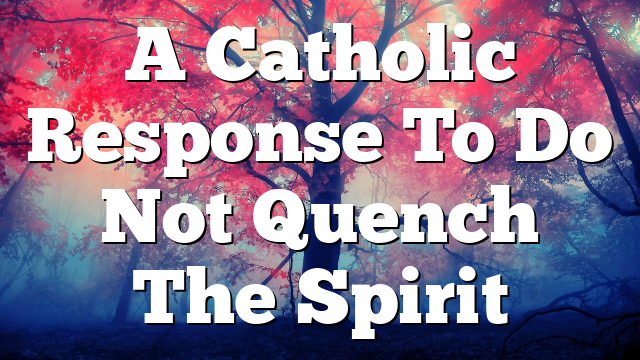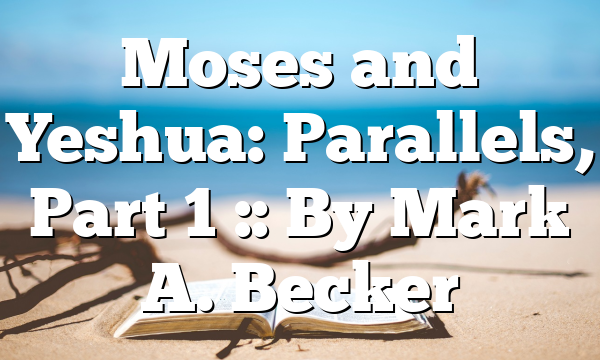Click to join the conversation with over 500,000 Pentecostal believers and scholars
Click to get our FREE MOBILE APP and stay connected
| PentecostalTheology.com



Pneuma 41 (2019) 523–526
A Catholic Response to “‘Do Not Quench the Spirit’: Charisms in the Life and Mission of the Church”
Joseph G. Mueller,SJ
Marquette University, Milwaukee, Wisconsin joseph.mueller@marquette.edu
We should welcome with gratitude to God this first bilateral international ecu- menical dialogue statement on charisms (referred to here asDQSand by para- graph numbers). It is a theologically strong document expressed in prose acces- sible to a wide public.DQStherefore deserves good circulation among Catholic and pentecostal churches so that it can fulfill its expressed hope of helping its readers “to rediscover the importance of charisms in their churches as they testify to the gospel” (§8). My response here concentrates on some theologi- cal, especially ecclesiological, presuppositions and implications of the shared positions on charisms in this document.
DQSconceives of charisms in general as diverse expressions and manifesta- tions of God’s loving presence that equip believers to participate in his saving plan and to worship him. It thinks of charisms as essential and vital for the church’s life and mission (§§9, 12, 66), for through them God builds up the church (§§19, 21, 26, 29, 30, 36, 52, 105, 111). These two statements imply that the church is essentially, perhaps among other things, a worshipping body that participates in God’s saving plan.DQSdoes not make this idea explicit; perhaps further dialogue between Catholics and Pentecostals can use this implication of DQSas a springboard for ecclesiological discussion.
Although charisms come on the divine initiative (13, 48–49, 65), one should ardently desire to receive them (§20, citing 1Cor 12:31). One should pray for charisms, expect them, and rely on these divine gifts (§§29, 48, 77, 98, 105). This zeal to receive charisms and the fact that they equip one for worship and for participating in God’s plan of salvation imply that this worship and partic- ipation are not merely passive but active, as does DQS’s rehearsal of the great works done by Old and New Testament figures at the instigation of the Spirit (§§16–18, 20).
Both clergy and laity are responsible for discerning, according to the crite- ria of truth and love, whether what someone claims to be a charism really is
© koninklijke brill nv, leiden, 2019 | doi:10.1163/15700747-04103035
1
524
ecumenical reflections
one (§12). In view of that for which charisms equip believers, one can con- clude that the truth and love in question here must be those that play an active role in God’s saving plan and in worship of him. Thus, discernment of spirits will depend on familiarity with the divine plan (hence, the emphasis on ortho- doxy and knowing the Scriptures in theDQSsection on discernment) and with proper worship of God. Discernment will depend, too, on the notion that the charisms must be exercised in an orderly manner, which befits God’s character as a God of order (§20, citing 1Cor 14:33, 40; see also §107).
If the reasoning above is correct, it follows that the church’s essential wor- ship and participation in God’s plan through charisms are active, truthful, lov- ing, and orderly. By the charisms, God through Christ and the Spirit makes people active in this truthful, loving, orderly, community-building, saving, and worshipful way. DQS’s notion of charism thus implies a theology of worship, an ecclesiology, and a theological anthropology, all of them robust. Apart from a depiction of worship that emphasizes the importance of order and discern- ment of spirits (§76, commenting on 1Cor 14),DQSleaves a theology of worship as an agenda item for the future of the dialogue.
On the other hand, the dialogue partners end their general treatment of charism with five paragraphs on the church as enlivened by the Spirit (§§24– 28). Here DQS states that the Spirit constitutes, animates, brings forth, directs, and empowers the church, of whose mission the Spirit is the primary agent (§24). The Spirit unifies the diverse charisms he gives to the church, and these charisms afford those who receive them the right and duty to use them in the freedom of the Spirit (§26). Catholics and Pentecostals not only agree here that the Spirit works in the church, they also aver together that the Spirit at work simply is one or another dimension of the church. “The institutional dimension of the Church is the Holy Spirit working through the leadership structures established by Christ. The charismatic dimension is the Holy Spirit working among believers of every rank continually, spontaneously, and often unpredictably” (§27). The dialogue here identifies the working Spirit with two essential dimensions of the church, which yields a high ecclesiology, indeed.
In what I just quoted from §27, DQS seems to reduce the church’s institu- tions to leadership structures. However, water baptism, Eucharist, and mar- riage; catechetical programs; almsgiving and other financial practices; aposto- lates with elders, youth, families, immigrants, and other populations; social jus- tice advocacy; Bible-reading groups; and many other structures and practices of our churches are certainly church institutions. One could not well describe them as “leadership structures,” although they all do instantiate more or less directly what Christ established in the church. There seems to be no reason to deny that the Spirit is working through all of these institutions, which have
Pneuma 41 (2019) 523–526
2
ecumenical reflections
525
as many ups and downs as do our churches’ leadership structure established by Christ. Although not established by Christ as essential to the church’s life, a particular catechetical program is certainly a nonessential instantiation of the church’s essential institutional dimension established by Christ, a dimen- sion that simply is the Spirit at work. Similarly, one particular way of living out the church’s Christ-founded leadership structure is a nonessential configura- tion of the church’s essential institutional dimension. Increased breadth in the conception of the church’s institutional dimension would show Catholics and Pentecostals that their communion in this ecclesial dimension is wider than they might otherwise suspect.
DQS makes the helpful point that the charismatic and institutional dimen- sions of the church are “co-essential … and … complementary” (§27). It notes that the church’s institutions are charismatic in that they are “animated by the Spirit and must rely on the Spirit,” while the charisms in the church are insti- tutional in that they “must be discerned by the Church and rightly ordered in service to the Church” (§27). But how does discernment by the church lend an institutional character to charisms? DQS implies that the pastoral office in the church is an institution for discerning charisms. It notes that pentecostal pas- tors should lead their flocks in the discernment of God’s will and take ultimate responsibility for decisions that follow from such discernment (§82), while it acknowledges that Catholics want their ordained ministers to have ultimate responsibility for discerning the charisms of the faithful (§88). DQS states in general that “pastoral oversight” of charisms involves discerning their authen- ticity and coordinating and guiding their exercise (§92, also §94).
Still, DQS gives no explicit account of how the need for discernment makes charisms institutional. It differentiates a Catholic notion of discerning God’s will, a “dynamic process” and an “ordinary corporate process” of “constant” “dia- logue” with the Spirit, from a pentecostal notion of discernment of spirits, a charism exercised at “specific moments” with “an ad hoc kind of authority … limited to a particular occasion or location.” Pentecostals are said to engage in both types of discernment (§§81–82, 84). Neither type is of itself institutional. DQS’s treatment of the Catholic tradition of the discernment of spirits as “a part of the spiritual heritage of the Church” misses the opportunity to highlight here the institutional character of discernment implied in §27. Ignatius of Loy- ola, for example, expressed discernment of spirits in terms of rules (Spiritual Exercises, nos. 313–336). As a discipline into which a master initiates someone through instruction in applying such rules, the discernment of spirits evaluates charisms in an institutional way.DQSimplies that the Word of God (Scripture, church teaching, and the deposit of faith) functions as a rule for discernment of authentic prophecy in this same institutional way (§46, see also §§78–79,
Pneuma 41 (2019) 523–526
3
526
ecumenical reflections
83, 107). DQS speaks of a “disciplined practice of discernment” helping to pro- vide for the practice of charisms “an atmosphere of support and encourage- ment with accountability” (§77), in particular, accountability to the standard of “orthodoxy” (§§78–79) or the rule of faith (§94), notions that imply institu- tionalization of belief. Yes, discernment involves an operation that “transcends the rational” and involves “an intuitive dimension” (§97), but, asDQSelsewhere implies, it is no less institutional for all that.
Finally, how does the right ordering of charisms betoken anything particu- larly institutional about them, as DQS 27 implies it does? Order need not be institutional in and of itself. The right ordering of charisms is institutional, I would submit, when charisms have a right relationship to the various institu- tions of the church. A supposedly prophetic charism that ends up undermining the institution of eucharistic worship would hardly be rightly ordered (see 1Cor 14:29–33a). Thus, the institutional right ordering of a charism functions as a cri- terion for discerning its authenticity, a criterion on which both Catholics and Pentecostals could agree. It would fit into the list of agreed criteria for discern- ment at §95 (for criteria of discernment, see also §§29, 47, 72, 74, 77–79, 107).
DQS is the sweet fruit of patient study, common prayer, and dialogue. Like anything sweet, it leaves its readers craving more.
Pneuma 41 (2019) 523–526
4


